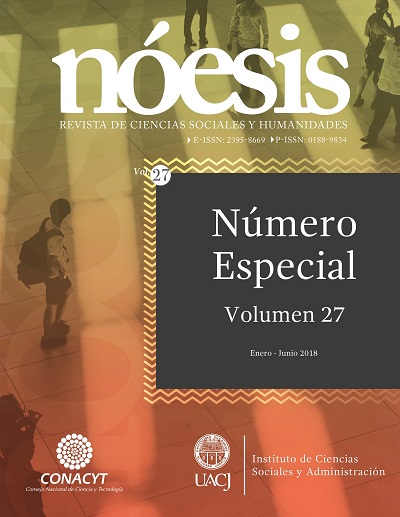Intellectual capital in a pernital maternity hospital of high speciality. Case study
Main Article Content
Abstract
The performance of health organizations is partially supported by the stocks of intellectual capital. Although the health sector is knowledge-intensive, distributed in the minds of individuals, captured in files, databases and reports, and embedded in organizational routines and committees, there are insufficient studies to explore intellectual capital as a iintangible resource for superior performance. The objective of this case study is identify intellectual capital manifestations (human capital, structural capital and relational capital) in a maternal perinatal hospital to improve its use. All alone intellectual capital does not achieve its purpose. It must be linked to tangible resources (for example, medicines and facilities), to build the daily dynamics required in reduction maternal mortality in women from State of Mexico.
Downloads
Article Details

This work is licensed under a Creative Commons Attribution-NonCommercial-ShareAlike 4.0 International License.
References
Ahmad, Abdel-Azis, Shawqi Naji y Nick Bontis. 2010. Intellectual capital and business performance in the pharmaceutical sector of Jordan. Management Decision. 18(1):105-131.
Amos, Elizabeth y Bart Weathington. 2008. An analysis of the relation between employee-organization value congruence and employee attitudes. The Journal of Psychology, 142(6): 615-631.
Aristizábal, Juan, Germán Gómez, Juan Lopera, Laura Orrego, Carlos Restrepo, Germán Monsalve, Martín Gómez, Nury Socha y Mauricio Vasco. 2005. Paciente obstétrica de alto riesgo: ¿dónde debe realizarse su cuidado periparto? Revista Colombiana de Obstetricia y Ginecología, 56(2): 166-175.
Barney, Jay. 1991. Firm resources and sustained competitive advantage. Journal of Management, 17(1): 99-120
Bontis, Nick, Mary Crossan y John Hulland. 2002. Managing and organizational learning system by aligning stock and flows. Journal of Management Studies, 39(4): 437-469.
Bontis, Nick. 1999. Managing organizational knowledge by diagnosing intellectual capital: Framing and advancing the state of the field. International Journal of Technology Management, 18(5/6/7/8): 433-462.
Booker, Lorne, Nick Bontis y Alexander Serenko. 2008. The relevance of knowledge management and intellectual capital. Knowledge and Process Management, 15(4): 235-246.
Bradley, Keith. 1997. Intellectual capital and the new wealth of nations. Business Strategy Review, 8(1): 53-62.
Creswell, John W. 2009. Research design. Qualitative, Quantitative, and Mixed Methods Approaches. Londres: SAGE Publications
Donoso, Bernardita y Enrique Oyarzún. 2012. Embarazo de alto riesgo. MedWave, 12(5). DOI: http://doi.org/10.5867/medwave.2012.05.5429
Dumay, John. 2012. Grand theories as barriers to using IC concepts. Journal of Intellectual Capital, 13(1): 4-15. DOI: http://doi.org/10.1108/14691931211196187
Eaton, Adrienne y Thomas Nocerino. 2000. The effectiveness of health and safety committees: Results of a survey of public-sector workplaces. Industrial Relations, 39(2): 265-290.
Evans, Jenna, Adalsteinn Brown y Ross Beker. 2015. Intellectual capital in the healthcare sector: a systematic review and critique of the literature. BMC Health Services Research, 15:556-569.
Habersam, Michael y Martin Piber. 2010. Exploring intellectual capital in hospitals: two qualitative case studies in Italy and Austria. Journal European Accounting Review, 12(4): 753-779.
Hermans, Raine e Ilkka Kauranen. 2005. Value creation potential of intellectual capital in biotechnology – empirical evidence from Finland. R&D Management, 35(2): 171-185.
Instituto de Salud del Estado de México. 2017. Portal institucional. http://www.salud.edomexico.gob.mx (3 de febrero de 2018).
Jang, Seung Hoon. 2013. The offensive framework of resource based view (RBV): Inhibiting others from pursuing their own values. Journal of Management and Strategy, 4(1): 62-69. DOI: http://doi.org/10.5430/jms.v4n1p62
Kannan, Gopika y Wilfried Aulber. 2004. Intellectual capital: Measurement effectiveness. Journal of Intellectual Capital, 5(3): 389-413. DOI: http://doi.org/10.1108/14691930410550363
Karam, Miguel, Patricia Bustamante, Martha Campuzano y Ángela Camarena. 2007. Aspectos sociales de la mortalidad materna. Estudio de caso en el Estado de México. Medicina Social, 2(4): 2005-2011.
Kong, Eric y Daniel Prior. 2008. An intellectual capital perspective of competitive advantage in non-profit organisations. International Journal of Non-profit and Voluntary Sector Marketing, 13(2): 119-128.
Kong, Eric. 2008. The development of strategic management in the non-profit context: Intellectual capital in social service non-profit organizations. International Journal of Management Reviewers, 10(3): 281-299.
Lev, Baruch y Stefano Zambon. 2003. Intangibles and intellectual: capital an introduction to a special issue. European Accounting Review, 12(4): 597-603.
Lozano, Leidy, Alix Bohórquez y Gloria Zambrano. 2016. Implicaciones familiares y sociales de la muerte materna. Revista Univ Salud, 18(2): 364-372.
Luthans, Fred. 1989. Organizational behavior. Nueva York: McGraw Hill.
Meyer, John y Natalie Allen. 1991. A three-component conceptualization of organizational commitment. Human Resources Management Review, 1(1): 61-89.
Remenyie, Dan. 2012. Case study research. The quick guide. Londres: ACPI.
Roos, Johan, Göran Roos, Nicola Dragonetti y Leif Edvinsson. 2001. Capital intelectual. El valor intangible de la empresa. España: Paidós.
Stewart, Thomas. 1997. La nueva riqueza de las organizaciones: el capital intelectual. Buenos Aires: Garnica.
Tzu-Ju, Ann. 2011. Resource fit in inter-firm partnership: intellectual capital perspective. Journal of Intellectual Capital, 12(1): 20-42. DOI: http://doi.org/10.1108/14691931111097908
Westbrook, Linda y Phyllis Schultz. 2000. Form theory to practice: Community health nursing in a public health neighborhood team. Advances in Nursing Science, 23(2): 50-61.
Yin, Robert. 2013. Case study research: Design and methods. California: SAGE.

